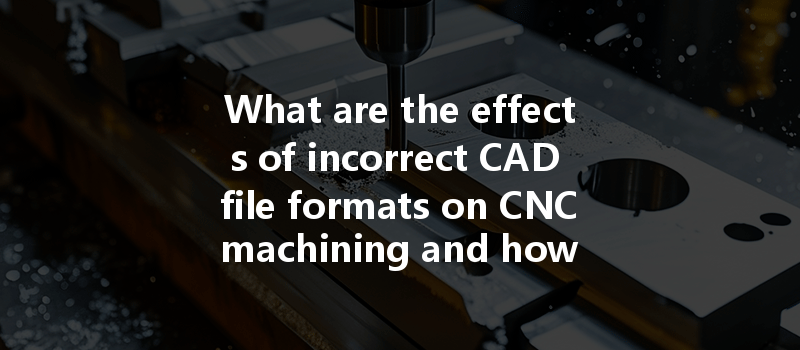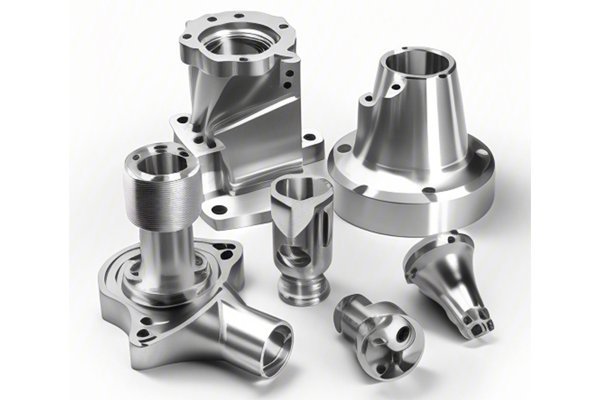In the rapidly evolving field of CNC machining, the importance of accurate and compatible CAD (Computer-Aided Design) file formats cannot be overstated. A single misalignment in file format can lead to production inefficiencies, increased costs, and compromised product quality. At YL Machining, we understand the intricacies of CNC machining, and we are committed to helping our clients navigate the complexities associated with CAD designs. This blog will delve into the effects of incorrect CAD file formats on CNC machining and offer actionable strategies to mitigate these risks, ensuring a smooth and efficient production process.
Understanding CAD File Formats in CNC Machining
CAD software has become a cornerstone of design in manufacturing. Various file formats such as STL, STEP, IGES, DWG, and DXF are widely utilized. Each format has its specific uses and capabilities:
Understanding these formats is essential for effective CNC machining, as the format selected directly affects the subsequent machining processes.
Effects of Incorrect CAD File Formats
Choosing the wrong CAD file format can have several adverse effects on CNC machining processes:
Using an incompatible CAD format can result in significant delays in production. When a format is misaligned with the CNC machine’s capabilities, operators may face additional steps to convert or redraft the design. This not only extends production timelines but can also lead to heightened labor costs as employees spend extra hours correcting the errors.
Incorrect file formats can distort critical geometric details, leading to inaccurate cuts and shapes. For instance, STL files, if used improperly, may not convey enough information for precise machining, causing inconsistencies in the final part. Studies have shown that improperly specified CAD files can lead to dimensional inaccuracies affecting up to 5% of produced parts, an unacceptable rate in high-precision industries.
When CNC machines receive flawed designs, the risk of using material inefficiently rises dramatically. As operators attempt to rectify errors by modifying raw material dimensions during machining, the result often leaves excess material still on the raw piece. Material waste not only inflates manufacturing costs but also raises sustainability concerns—issues increasingly important in modern manufacturing.
Post-processing is crucial for achieving the desired surface finish, stabilizing dimensions, and enhancing aesthetic appeal. Incorrect CAD formats may lead to designs that cannot be effectively processed, resulting in a product that needs additional time for modifications or even disposal. Research suggests that up to 20% of post-processed parts may require reworking due to upstream CAD issues, amplifying production costs and timelines.
How to Mitigate Risks Associated with CAD Formats
Understanding the inherent risks of using incorrect CAD file formats is only part of the picture; knowing how to effectively minimize these risks is critical. Below are several strategies to ensure a smoother CNC machining process.

Before moving to the machining stage, conduct a comprehensive review of the design files. Consulting with engineers and CNC operators on the most suitable file type for the specific machine and process required is essential. Adopting industry best practices and standards can mitigate the risk of using inappropriate CAD formats from the outset.
CAD/CAM (Computer-Aided Manufacturing) integration can bridge gaps between design and machining. This integration allows CAD designs to be processed directly into machining instructions without the need for manual reformatting, thus reducing human error significantly. Companies that embrace CAD/CAM systems report a 30% increase in efficiency and output quality.
Employees involved in the CNC machining process should receive regular training on the different types of CAD files and the importance of file selection. Continuous education helps keep the team updated on the latest technologies and practices, ensuring they can swiftly identify and rectify any issues that arise during the design or machining phase.
Establishing a quality control process for CAD files can greatly reduce the likelihood of errors at the outset. This may involve the use of automated software to verify the integrity and compatibility of CAD files against CNC machine requirements before production begins. For example, software can automatically detect incompatible file types or missing components, thereby alerting operators at an early stage.
Utilizing simulation tools can allow for virtual testing of the CNC machining process. These simulations can examine how the CNC machine interprets the CAD file and identify potential issues before actual machining occurs. Forward-thinking firms utilizing simulation technologies report improvements in part accuracy by 25%, enhancing confidence in the fabricated products.
At YL Machining, we emphasize the importance of clear communication with our clients regarding CAD file requirements. Clients should feel comfortable discussing their needs and expectations, including any specific software tools or techniques used to generate designs. This boosts collaboration and contributes to a higher success rate of effective file management.
Understanding the implications of incorrect CAD file formats is crucial in the CNC machining industry. The potential setbacks can impact not just operational efficiency but also client relationships and profitability. By implementing thorough review processes, investing in CAD/CAM integration, training staff, employing quality control measures, utilizing simulation tools, and maintaining transparent communication with clients, businesses can significantly mitigate the risks associated with CAD file errors.
At YL Machining, we are committed to leveraging our expertise to provide efficient, high-quality machining solutions tailored to each client’s unique specifications. As the industry evolves, embracing best practices for CAD file management and CNC machining will be essential for thriving in a competitive landscape.
By prioritizing accuracy and compatibility in CAD formats, manufacturers can ensure a seamless transition from design to production, ultimately leading to greater efficiency, reduced waste, and enhanced product quality—an alignment we, at YL Machining, strive to achieve with every project we undertake.
References
—






